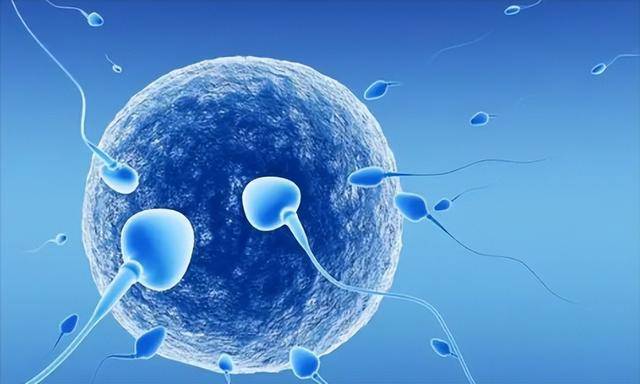Semen is an important component of the male reproductive system, carrying not only the male genetic information but also directly influencing female fertility. The health of semen is directly related to the success rate of reproduction. So, how to determine if male semen is healthy? In fact, just by observing and self-testing from the following four aspects, you can roughly judge the health status of semen.
1. Basic knowledge of semen
Semen is the fluid produced by the male reproductive system, mainly consisting of sperm and seminal plasma. Sperm is produced by the testes, which are male reproductive cells responsible for transmitting genetic information. Seminal plasma is secreted by accessory glands such as the prostate, seminal vesicles, and bulbourethral glands, containing various nutrients and enzymes to provide energy and protection for the sperm.
The main function of semen is to transmit sperm. During sexual intercourse, semen is ejaculated into the female’s vagina, and the sperm then travel through the cervix, uterus, and fallopian tubes to combine with the egg, forming a fertilized egg for reproduction. In addition, the nutrients and enzymes in seminal plasma can provide energy for sperm, protect them from the acidic vaginal environment, and help them reach the vicinity of the egg.
2. Four aspects of judging the health of male semen
1. Color and consistency of semen
Normal semen should be milky white or pale yellow in color and should have a viscous consistency. If semen appears reddish or greenish, it may be due to blood or infection. Consistency that is too thin or too thick may also indicate health issues.
2. Volume of semen
Normal semen volume during ejaculation should be between 1.5 to 5 milliliters. Excessive semen volume may result from prolonged abstinence, while low semen volume may be due to frequent ejaculation or reproductive system health issues.
3. Taste of semen
Normal semen should have a faint chlorine-like taste due to its high protein content. A strong or unusual taste may result from diet, medications, or reproductive system infections.
4. Sperm count and motility in semen
In normal semen, sperm count should range from 20 million to 50 million per milliliter, with a majority of the sperm being active. Decreased sperm count or motility may be influenced by diseases, medications, or lifestyle factors affecting sperm production and development.
3. Diseases represented by abnormal semen
1. Changes in semen color: Pink, red, or brown semen may indicate blood in the semen, known as hemospermia, possibly caused by conditions like prostatitis, urethritis, seminal vesiculitis, or prostate cancer.
2. Decreased semen volume: A significant decrease in semen volume may be due to conditions like diminished prostate function, seminal vesiculitis, or ejaculatory disorders.
3. Changes in semen viscosity: Persistent thick or thin semen may be due to conditions like prostate diseases, seminal vesiculitis, or disruptions in sperm production.
4. Absence of sperm in semen: A condition known as azoospermia, which may result from reproductive tract blockages, sperm production issues, hormonal imbalances, etc.
5. Decreased sperm count in semen: Known as oligospermia, potentially caused by disruptions in sperm production, hormone imbalances, reproductive tract infections, etc.
6. Reduced sperm motility in semen: Could be due to issues with sperm production, hormonal imbalances, reproductive tract infections, etc.
4. How to maintain healthy semen
1. Balanced diet
Eat foods rich in zinc, vitamins C and E, folic acid, and omega-3 fatty acids, such as seafood, nuts, whole grains, fruits, and vegetables.
2. Moderate exercise
Moderate physical activity can enhance overall health, including semen health. However, excessive exercise might have a negative impact on semen quality, so moderate exercise is recommended.
3. Quit smoking and drinking
Tobacco and alcohol consumption can negatively affect semen quality. Quitting smoking and drinking may have a positive impact on semen health.
4. Avoid overheating
Prolonged sitting, tight clothing, or using hot tubs and saunas can lead to testicular overheating, affecting semen quality.
5. Regular check-ups
Regular physical examinations, including semen analysis, can help monitor semen health and detect and address potential issues in a timely manner.
6. Treat diseases
If you have any diseases that might affect semen health, such as sexually transmitted diseases, diabetes, or hypertension, timely treatment is crucial.
7. Manage stress
Long-term stress and anxiety can negatively impact semen quality. Trying relaxation techniques like deep breathing, yoga, or meditation can help manage stress.
5. Conclusion
In summary, the health of male semen is a complex issue involving many physiological and lifestyle factors. Self-checking from these four aspects can serve as an initial assessment tool, but it cannot replace professional medical examinations. If you notice any potential issues during self-checking or have concerns regarding reproductive health, seek help from healthcare professionals.
Furthermore, maintaining good lifestyle habits like moderate exercise, balanced diet, sufficient sleep, and stress management can improve semen quality. Male reproductive health is not only essential for individuals but also for the overall happiness of the family. Therefore, every man should prioritize and regularly check their semen health.


